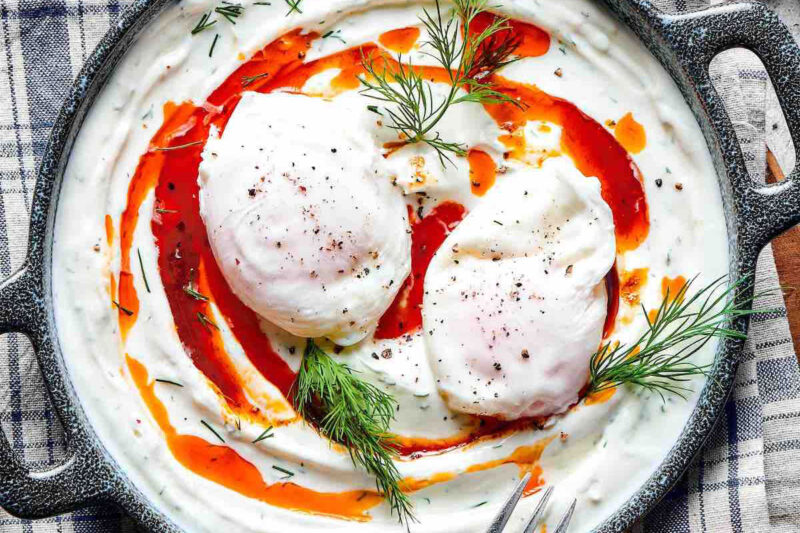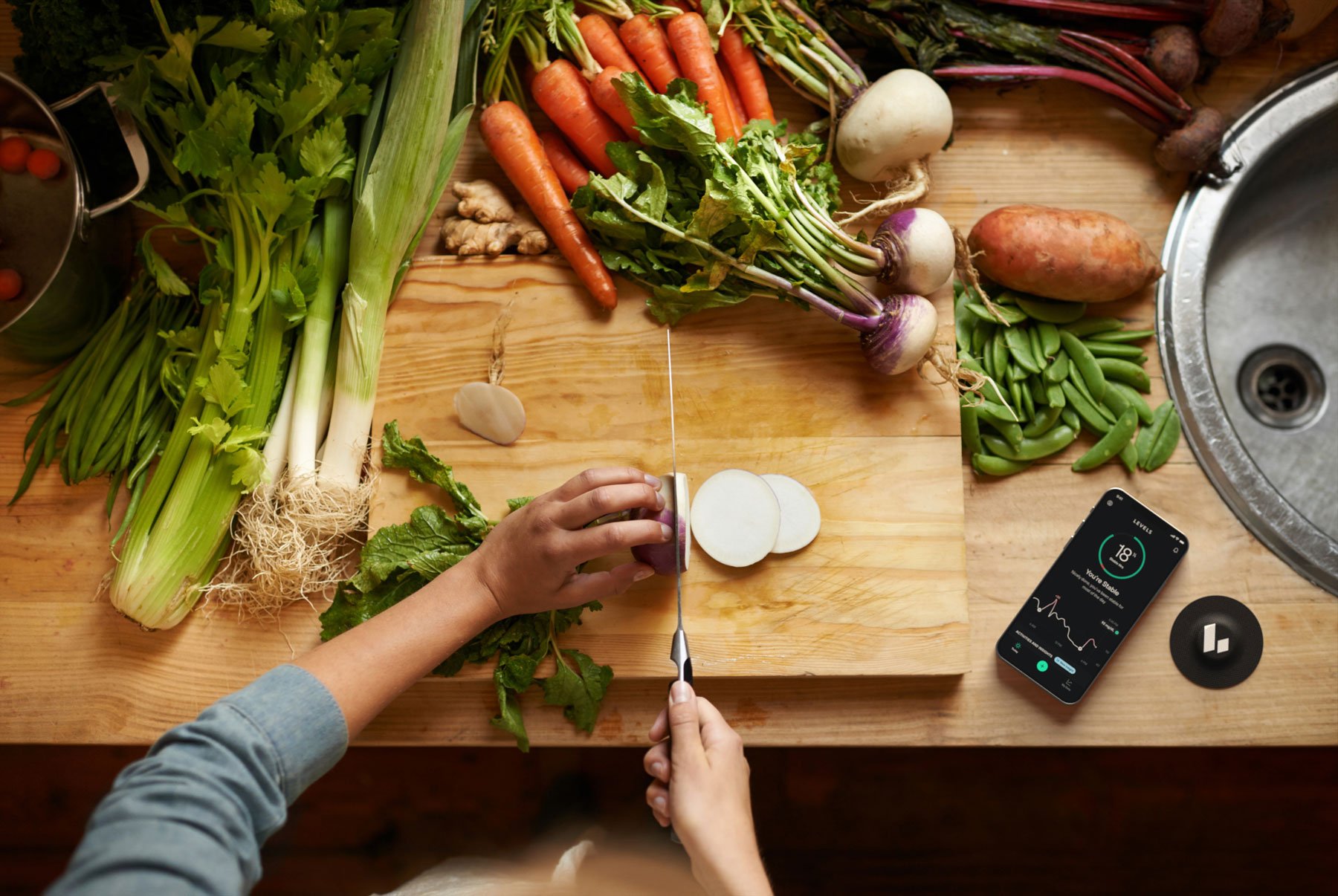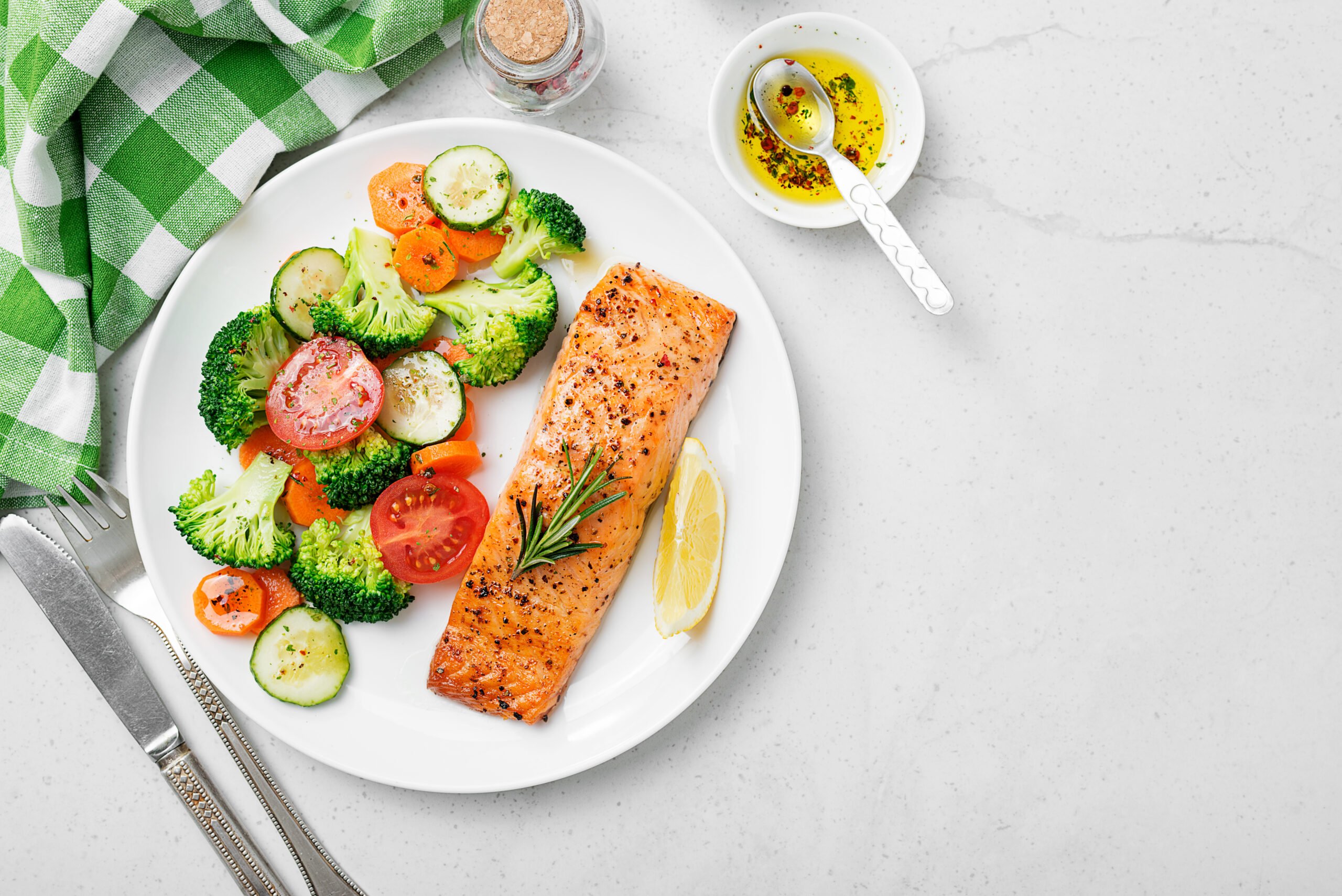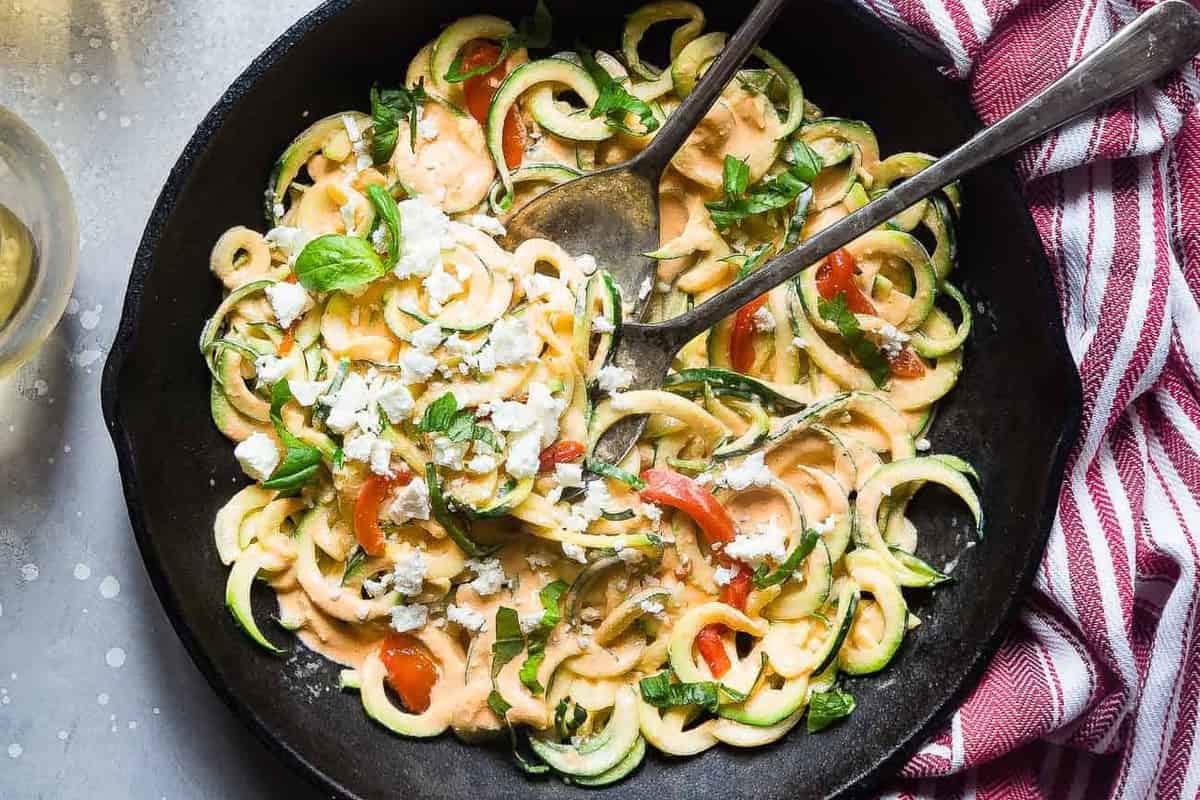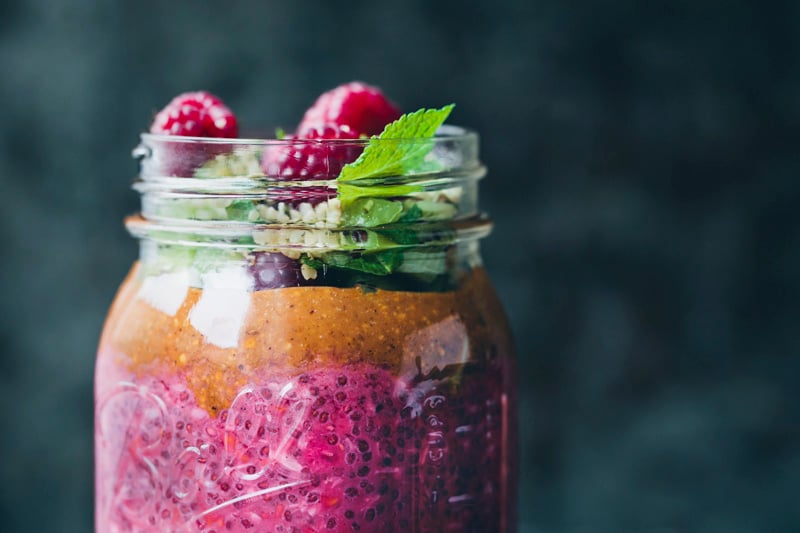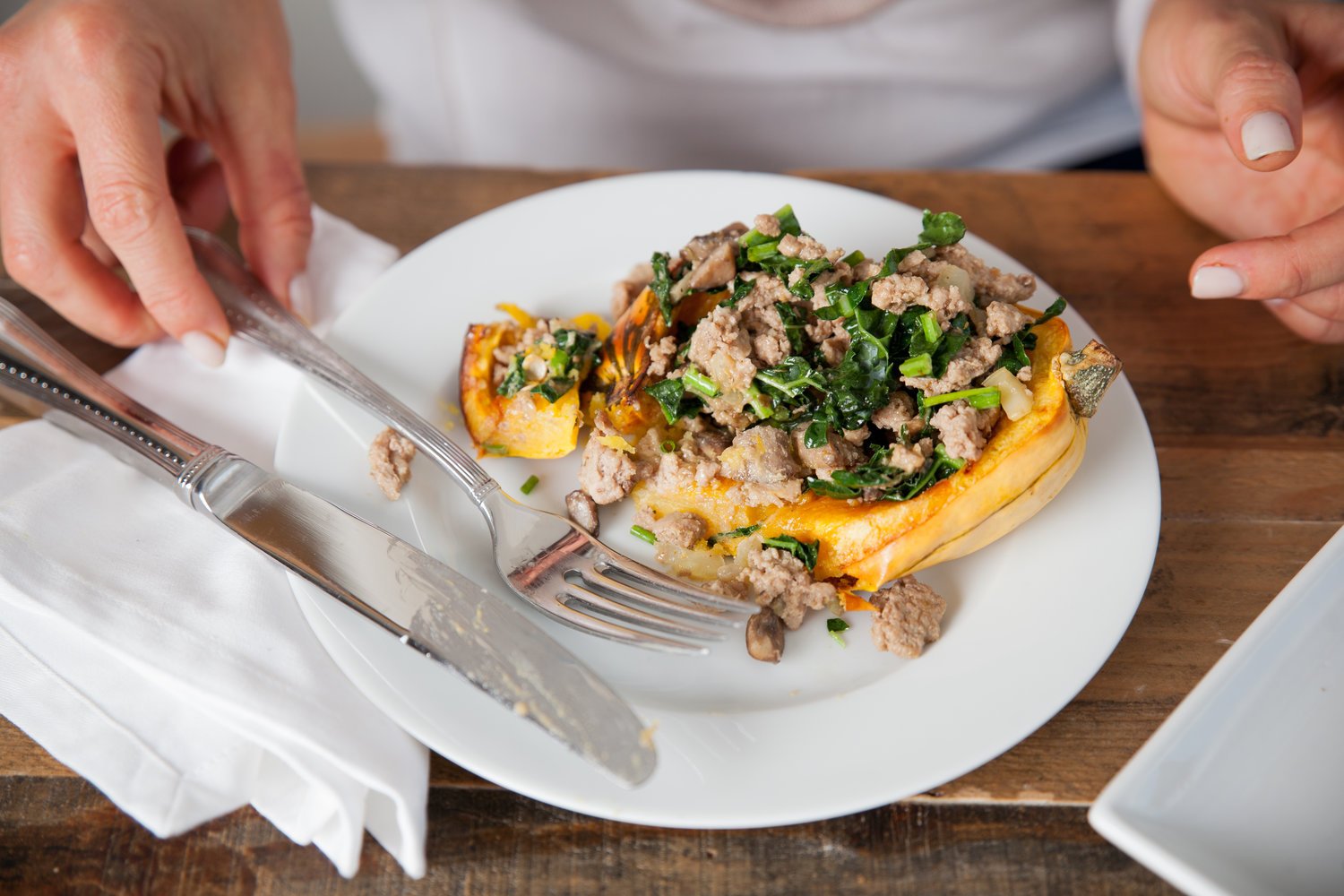Image courtesy The Big Man’s World
Eating low-carb and eating high-protein go hand-in-hand for metabolic health.
Protein may be better known for boosting satiety and supporting muscle growth and repair, but it also can help keep blood glucose levels in a healthy range. Although this macronutrient doesn’t usually directly affect blood sugar, it can help minimize spikes after meals by stimulating the release of the hormone cholecystokinin and slowing gastric emptying, thus delaying carbohydrate metabolism and the subsequent release of glucose into the bloodstream.
Pairing a high-protein diet with lower-carb consumption may improve insulin sensitivity. One observational study performed on over 300 participants with obesity found that eating a high-protein diet low in carbs over nine months reduced insulin resistance. And some research suggests that protein alone may also stimulate insulin secretion in people without diabetes.
Though the amount of protein you need depends on several factors—like sex, age, and activity level—the general daily recommendation is to eat between 0.8 and 1.3 grams of protein per kilogram of body weight. That translates to about 54 to 88 grams per day for a 150-pound person. Low-carb eating regimens can vary; many allow no more than 40 grams of carbs daily or roughly 10 grams per meal. You’ll need to figure out what exactly works for you through trial and error, but we only included recipes that had a max of 16 grams of net carbs or fewer and at least 20 grams of protein so that they can easily be added to any regimen.
The tips and recipes below will help you reach this target in flavorful, satisfying ways.
Learn more:
How to Add More Protein to Your Diet
Consuming more protein regularly doesn’t translate to a bland diet of steamed chicken breasts. You can add a variety of protein sources with different flavors and textures to any meal to keep things interesting.
1. Diversify protein sources
Animal sources are “complete proteins,” meaning that they contain all 9 essential amino acids (protein building blocks) that your body needs but can’t make itself. Examples include fish, poultry, meat, dairy, and eggs—choose wild-caught, free-range, and grass-fed options as much as possible for optimal metabolic health.
Although some plant-based foods, such as tofu, hemp, and chia seeds, are complete proteins, many are missing one or more essential amino acids. However, you can easily supplement any amino acids missing from one plant-based protein source by pairing it with another. For example, beans are low in methionine, but this amino acid is abundant in grains, nuts, and seeds; hummus combines garbanzo beans and sesame seed-based tahini to provide a complete protein source.
In general, try to eat a variety of whole foods—both protein-rich and not—to meet your nutritional needs. Pairing things like nuts and beans with meat and animal-based ingredients will increase the protein content of your food while also providing other nutrients essential to metabolic health, like healthy fats and fiber.
2. Add protein to every meal
The best way to meet the recommended daily intake is to ensure you get protein with every meal, says Rhyan Geiger, RDN, owner of Phoenix Vegan Dietitian. Meat and fish are good sources, and you can also make protein-rich swaps for traditionally low-protein ingredients—like lentil pasta instead of whole wheat or Greek yogurt in place of mayonnaise in a salad dressing—to increase the overall protein content of a dish.
3. Snack on protein
Things like raw nuts, shelled edamame, and hardboiled eggs deliver satisfaction and a better blood glucose response than the usual refined-carb, high-sodium snack-time go-to’s, like chips and popcorn. Opt for one of the following snack ideas to meet your daily protein requirements and satisfy your cravings.
- One 7-ounce serving of Greek yogurt with 1 ounce of toasted almonds provides almost 26 grams of protein.
- One 100-gram serving of grilled edamame with the seasonings of your choice provides almost 12 grams of protein.
- Use two slices (or 55 grams) of sliced, smoked turkey breast and two slices (or 34 grams) of cheddar cheese to make savory snack rolls with 19 grams of protein.
- Two hardboiled eggs topped with a tablespoon of Greek yogurt each and hot sauce or seasonings provide almost 15 grams of protein.
- One 100-gram serving of roasted chickpeas finished with the seasonings of your choice and a tablespoon of hemp seeds delivers about 12 grams of protein.
4. Get creative with toppings and add-ins
Protein powder and hemp seeds can help you add 10 to 20 grams of protein to foods without affecting flavor. Similarly, swapping traditional soup and salad toppings, like croutons and crispy wonton noodles, for nuts and seeds and even legumes, like crispy baked chickpeas and edamame, will add a crunch without the blood sugar spike. Adding just 3 tablespoons of hemp seeds to a smoothie gives you an extra 10 grams of protein. You can also stir a scoop of nut butter (cashew or almond works well thanks to their mild flavors) into pasta sauce or a pot of chili.
Low-Carb Recipes High in Protein
The following recipes contain a minimum of 20 grams of protein and no more than 16 grams of carbs. Add them to your regular rotation to support your metabolic goals and satisfy your taste buds at the same time.
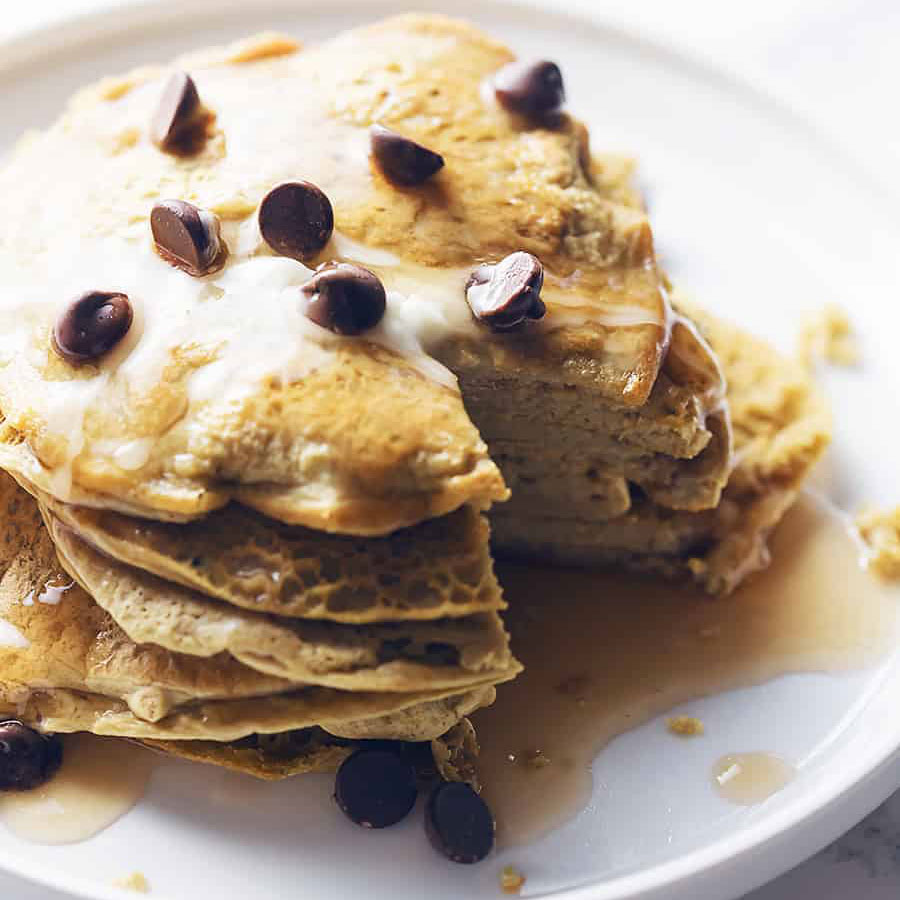
Image courtesy Low Carb with Jennifer
Breakfast
These flourless pancakes are fluffy and airy, thanks to a base of eggs, protein powder, and baking soda. Opt for a protein powder with little or no added sugar and top with nut butter.
Although this breakfast sandwich doesn’t use bread, it tastes as good as the fast-food favorite and has 40% more protein, thanks to two egg “buns.” Opt for a sausage made with minimal additives and grass-fed, organic meat, like this one from Force of Nature.
3. Cauliflower Hash with Sausage and Eggs
Breakfast hash tastes just as good and has far fewer carbs when made with cauliflower instead of potatoes. Add sausage and eggs, and you’ll kick off the day with 26 grams of protein.
Hemp seeds are rich in omega-3 fatty acids, fiber, and protein, and when you mix them with chia seeds and coconut milk, you get a thick, warm oatmeal alternative that won’t spike your blood sugar.
Quiche is easier to make without the carby crust, and this recipe compensates with more eggs to keep the structure. Add nutty Muenster cheese and spinach for a dish that packs about 20 grams of protein per serving.
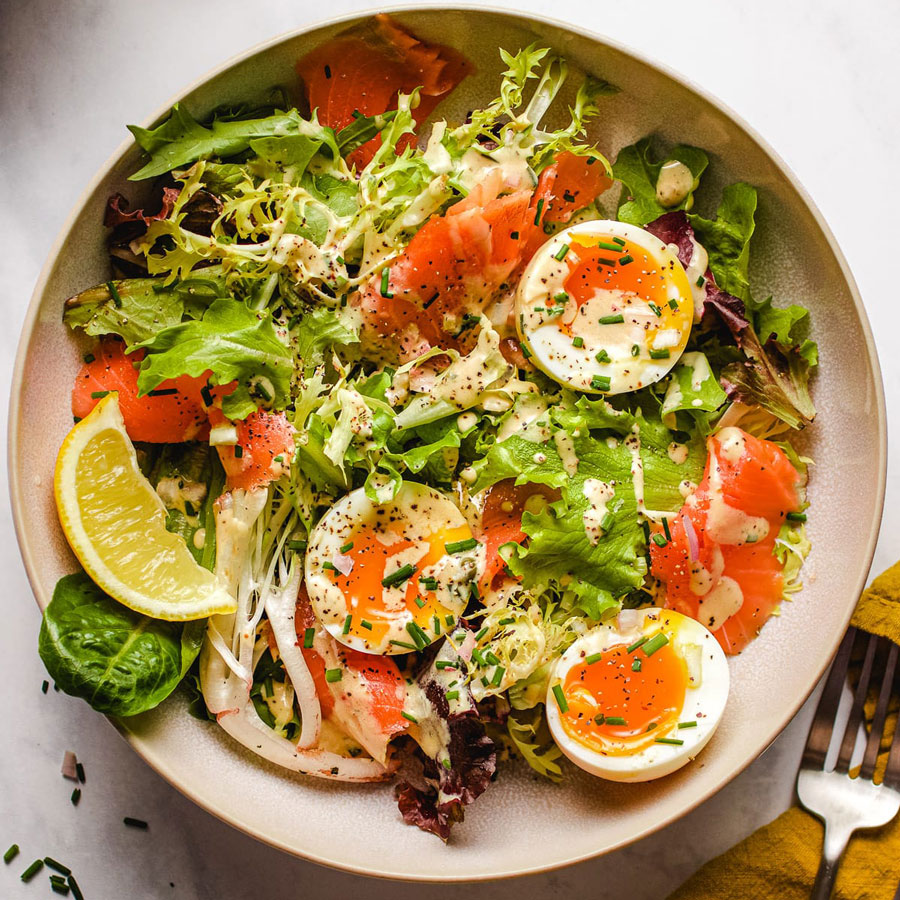
Image courtesy I Heart Umami
Lunch
6. Keto Asian Chicken Lettuce Wraps
Thanks to a soy-sesame-peanut butter sauce, this recipe tastes like takeout. Swap the brown sugar for a natural sweetener, like monk fruit, and feel free to add other veggies, like onions and mushrooms.
These colorful skewers—with red, green, and yellow bell peppers and red onions—are flavored with a zesty marinade. Serve with tzatziki (or plain Greek yogurt) for extra probiotics and cauliflower rice.
This dish has all the components of a tasty egg roll minus the refined carb-rich wonton wrapper. A mix of ground turkey or chicken, fresh ginger, onions, coleslaw mix, and coconut aminos deliver the flavor you crave, as well as plenty of protein. If you’re itching for a hot sauce, skip the sriracha and opt for one without sugar, like Tabasco.
Although smoked salmon is most commonly served on bagels, the flavorful fish is an excellent way to add more protein to your next salad. Serve it over a bed of greens that add a little protein, like spinach or kale.
10. Mediterranean Turkey Salad
Filled with artichoke hearts, leafy greens, feta cheese, tomato, diced cucumbers, and ground turkey, this recipe doesn’t skimp on flavor or protein. The creamy lemon dressing takes it over the top.
11. Turkish Eggs
These Turkish eggs are easy to make and deliver 29 grams of protein for only 8 grams of carbs. Serve it with a vessel for dipping, like low-carb bread, or hearty root vegetables like radishes.
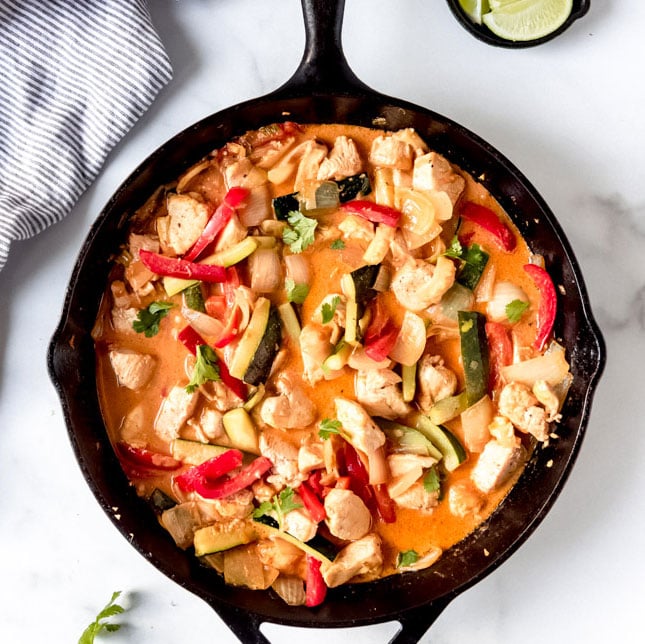
Image courtesy Gimme Delicious
Dinner
This spin on the takeout classic delivers the same flavors minus the carbs and sugar. Instead of rice noodles, it calls for shirataki noodles, a great low-carb pasta alternative to keep on hand.
13. Low-Carb Lasagna
This recipe substitutes thinly sliced zucchini for lasagna noodles. Everything else is what you’d usually find in a lasagna: ricotta cheese, mozzarella, ground beef, and marinara sauce. If you buy premade sauce, check that it contains no added sugars.
14. Garlic Mushroom Chicken Bites
Mushrooms are packed with compounds that support metabolic health, such as potassium, folate, and B vitamins. Combine them with protein-rich chicken thighs and the flavors of garlic, onion, paprika, and parsley for a satisfying meal.
15. Enchilada Stuffed Zucchini Boats
Fill hollowed-out zucchini halves with ground turkey, onion, tomatoes, cheese, and spicy enchilada sauce, and you won’t miss the tortilla-wrapped original recipe—or all of its carbs. Skip the pre-shredded cheese—which can contain unwanted additives to prevent clumping—and buy a block to grate fresh. You can also make your own enchilada sauce.
16. Shrimp Scampi Sheet Pan Meal
It doesn’t get much easier than this one-pan dinner that’s ready in less than 20 minutes. You’ll get 11 grams of protein per serving, primarily from the shrimp.
17. Thai Chicken Coconut Curry
Serve this saucy coconut curry over a base that will absorb all the delicious flavors but won’t fill you up on refined carbs. If you’re sick of cauliflower rice, consider zucchini noodles or broccoli rice.
18. Bunless Burgers
This recipe is way more flavorful than fast food, thanks to smoked paprika, cumin, chili, and garlic powder. Top as desired (think: tomato slices, thin slices of onion, maybe a little cheese) and wrap in lettuce leaves.
Want to learn more about your metabolic health?
Levels, the health tech company behind this blog, helps people improve their metabolic health by showing how food and lifestyle impact your blood sugar, using continuous glucose monitoring (CGM), along with an app that offers personalized guidance and helps you build healthy habits. Click here to learn more about Levels.
